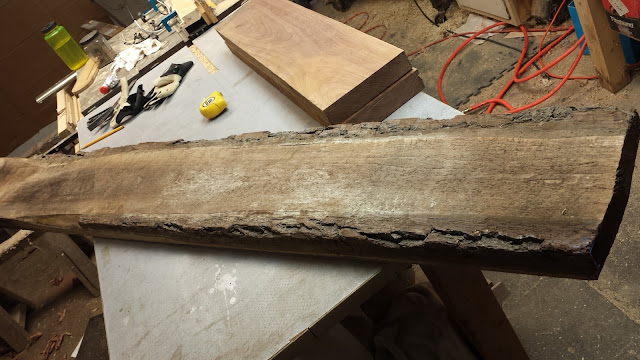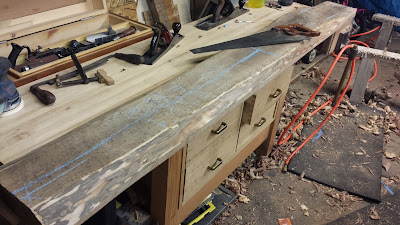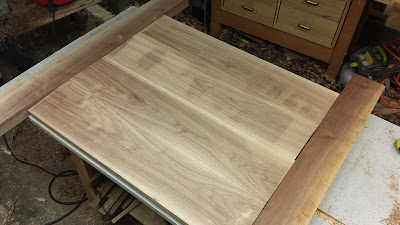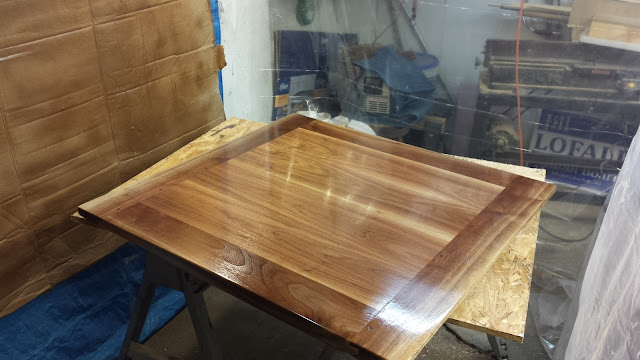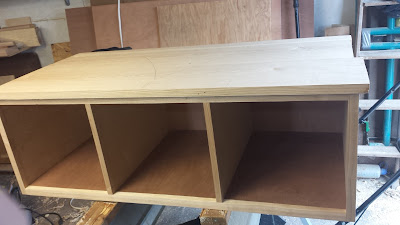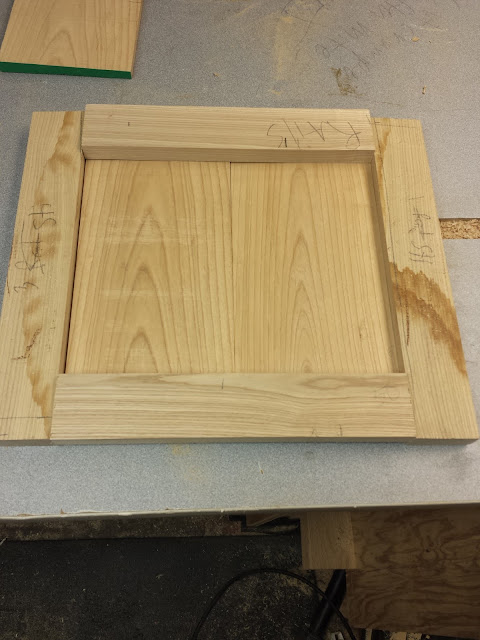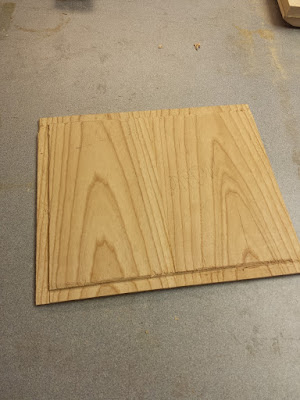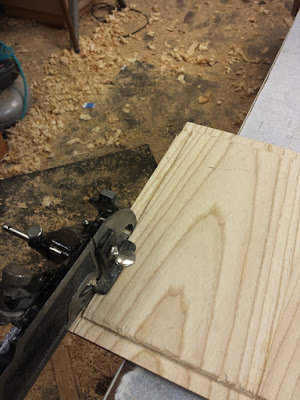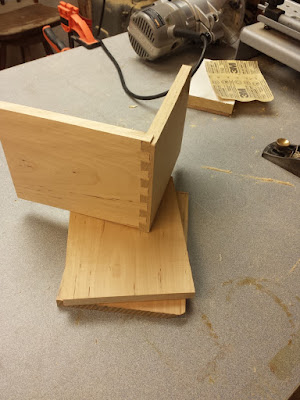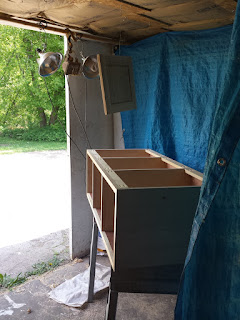Walnut is a lovely wood that is a pleasure to work with.
Where the caveat lies in finding enough matching boards for a project. The
variation of colors in walnut can vary wildly from tree to tree. Here we see 5 boards and at least 3 different
shades of walnut. I was trying my best to save the client some money and use
lumber I already had in stock but… I’m good but not magic.
I had to head to my
lumber dealer and search through his stock to find something that would match.
The biggest board I had in stock has some reddish tinge to it so that’s what I
looked for. It took a while but I found a real beauty that ended up being
perfect for the job. When I picked it I was planning on cutting off the bark
but, once I got it home and measured everything, it turned out that I needed to
make use of the entire board. I went ahead and peeled the bark off and realized
that it had a really nice natural edge. I’ve never worked with live edge but
after checking that it was OK with the client, I went for it.
Here's the results of the resawing. You'll notice that the two boards at the bottom of the picture are a nice book match but the others are two different boards. And you can clearly see that one of the breadboard ends is another board again. The way I tried to work it out is a border of darker boards with the center field being lighter stuff. You can see it in the following picture.
Now here's a shot of the natural edge. I'll have to carefully trim one of the boards to try for a nice, smooth transition.
Time for glue-up! After jointing the edges of all the pieces I threw some biscuits in for alignment and glued up. It was a pretty stress-free glue-up. The one thing you have to watch out for on a bigger panel like this is that the clamps aren't bowing it up or down. If it does start to happen, you can just push the panel flat with some shims between the clamp and the pane.
I mostly skipped taking pictures of the prep work on the
main field of the table. It’s pretty boring stuff. I resawed the big board that
I started with to make 4 nice 1x6x34 boards. Resawing is when you set the board
up on its narrow edge and slice it into 2 thinner boards. I used my trusty old
Delta bandsaw that restored real-time right here on this blog. I really love
that saw.
Here's the results of the resawing. You'll notice that the two boards at the bottom of the picture are a nice book match but the others are two different boards. And you can clearly see that one of the breadboard ends is another board again. The way I tried to work it out is a border of darker boards with the center field being lighter stuff. You can see it in the following picture.
Now here's a shot of the natural edge. I'll have to carefully trim one of the boards to try for a nice, smooth transition.
Time for glue-up! After jointing the edges of all the pieces I threw some biscuits in for alignment and glued up. It was a pretty stress-free glue-up. The one thing you have to watch out for on a bigger panel like this is that the clamps aren't bowing it up or down. If it does start to happen, you can just push the panel flat with some shims between the clamp and the pane.
After squaring up the panel I cut the joinery for the breadboard ends and install the 4 boards around the outside and a clean up with my trusty old jack plane. This one dates from the 1880's.
The clients have a base they want to use for this tabletop. It came with a glass top that they're sick of so I had to figure out to attach this top to that base. My solution was threaded inserts. There are very simple drill attachments that install these handy little inserts but I don't have one. I had to get creative to get them in but it was nothing that I couldn't overcome.
On to the finish booth and installation

